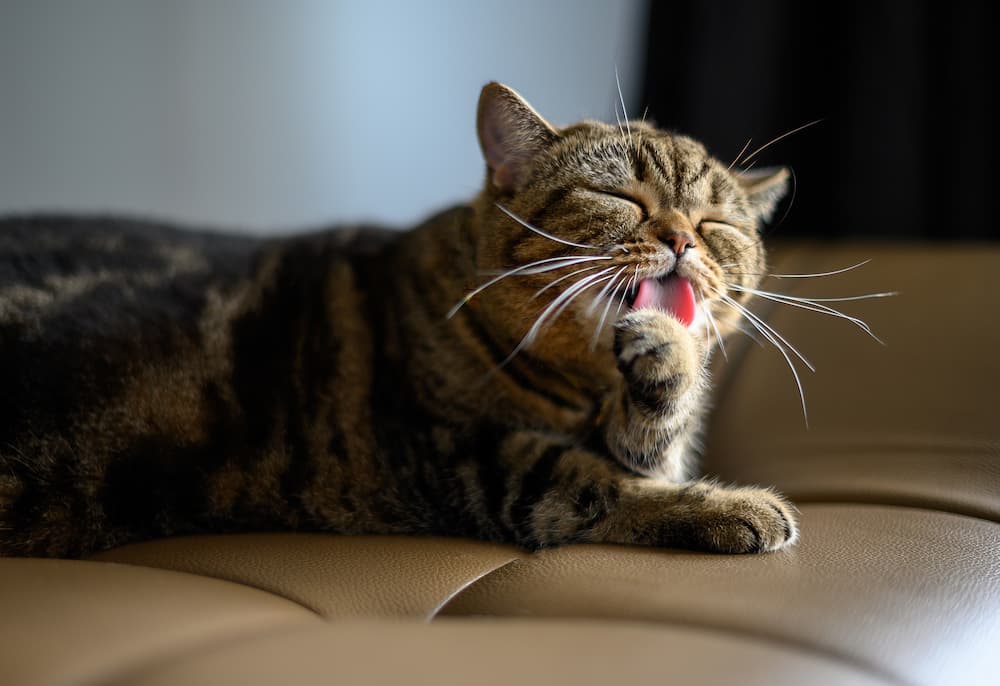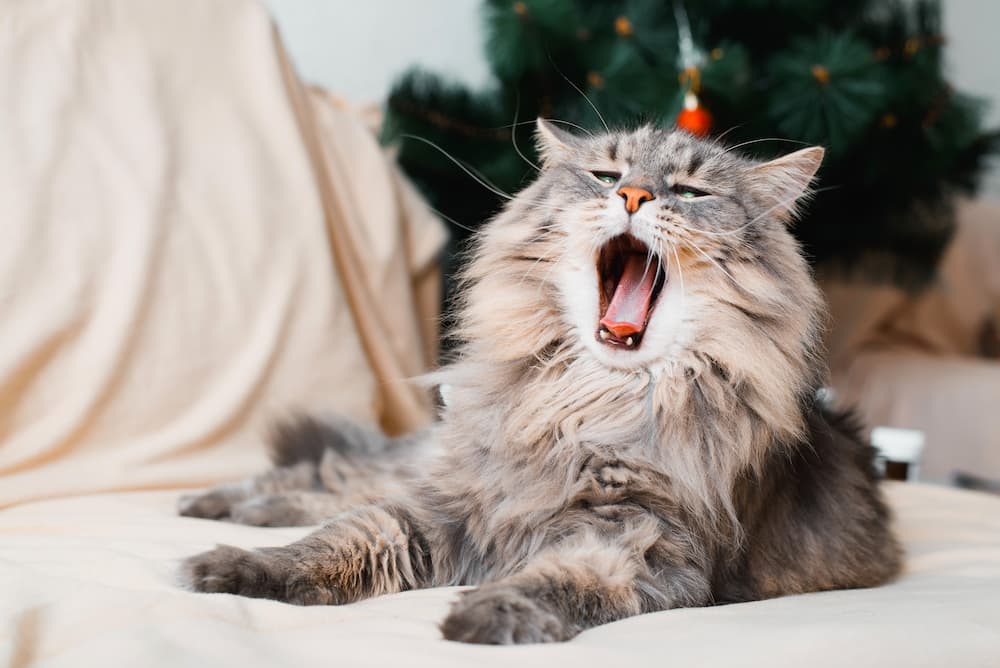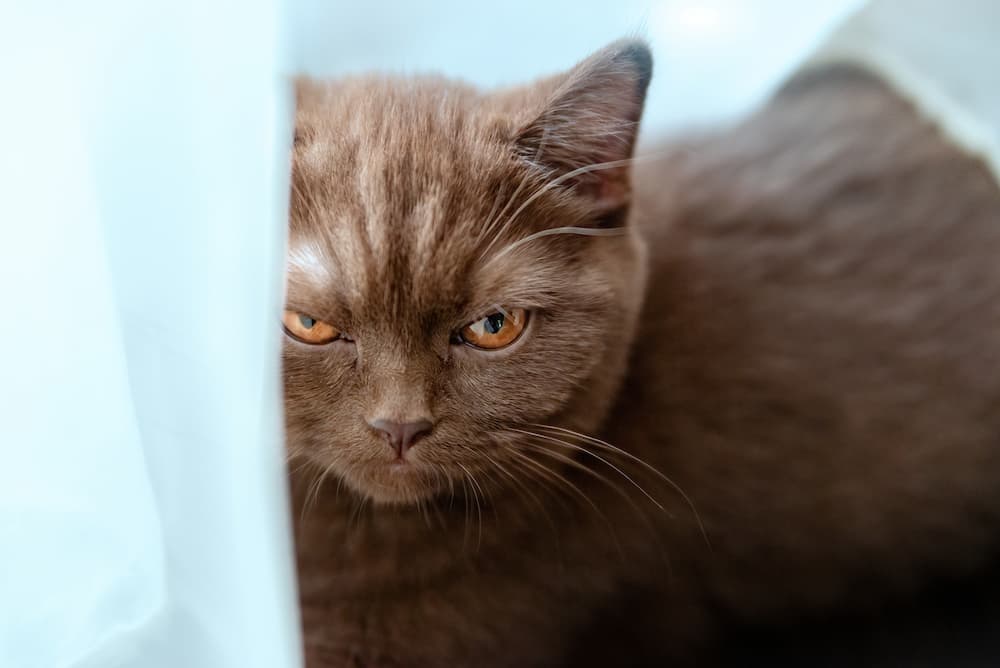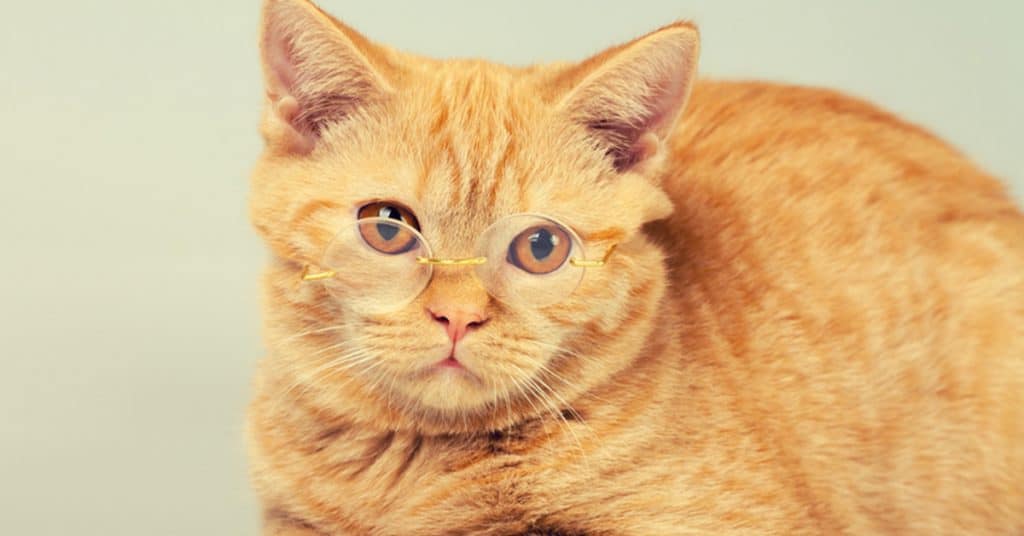Cats are fascinating creatures with unique traits that set them apart from other animals. One of their most intriguing features is their tongue. While it may seem like just a tiny part of their body, a cat’s tongue is an incredibly complex and versatile tool for many purposes. In this post, we’ll explore ten fascinating facts about a cat’s tongue that you may not have known before.

The Grooming Secret to a Cat’s Fastidiousness: The Intricate Papillae on Their Tongue
A cat’s tongue is a fascinating and riveting piece of biological engineering. Covered in many tiny, backward-facing barbs called papillae, it’s no wonder that a cat’s tongue is the ultimate tool for grooming and cleaning.
Each papilla is a wonder to behold, with a pointed shape and a texture that almost feels like an Emory board.
They are arranged in a precise and intricate pattern on the tongue, creating an efficient and effective surface.
The papillae easily remove dirt, debris, and parasites as a cat licks its fur or prey.
It’s no wonder cats are known for their meticulous grooming habits, and their tongues are a testament to their prowess. It’s enticing to observe how cats use their tongue to clean themselves, and their rough tongue texture also helps them remove loose fur when they groom.
The Rough and Ready Tongue of a Feline Predator
These barbs not only help cats to keep their fur neat, but they also play a crucial role in their survival by helping them to remove every last bit of meat from a kill. The roughness of a cat’s tongue allows them to scrape the flesh off bones while eating, making them a walking slaughterhouse for their prey.
A feline has a natural scouring pad in its mouth, ready to lick its dinner to death.
The little barbs allow the tongue to easily remove fur, feathers, and flesh from the prey, scrubbing the carcass to shreds.
The papillae are made of keratin, the same material found in human hair and nails, and are incredibly tough and durable.
The result is a cat’s tongue perfectly adapted for the messy and relentless business of hunting and consuming prey.
RELEVANT: Cat Body Parts
A Mother-Nature-Made Thermostat
A cat’s tongue is used not only for grooming its fur and cleaning its prey but also as a natural thermostat. When cats lick themselves to remove fur, they add a thin layer of saliva to their body. This saliva is a cooling agent, reducing the cat’s body heat. As the saliva evaporates, it carries away the heat from the cat’s body, helping to regulate its temperature. Plus, the saliva acts sort of as sweat does for people, but kitties get a sweat spreader too! Their tongue is a built-in air conditioner.
Mastered Drinking Skills
The feline tongue’s shape and function accurately represent the magical wonders of the natural world. While a dog will spoon his water, a cat acts more like a frog, repeatedly snatching an insect.
Have you ever watched a cat drink water? It is a sight to behold. The feline tongue is a miraculous organ that moves seemingly at the speed of light to flip water into its mouth from the tip of its vocabulary. A cat’s ability to quickly close its mouth with great precision allows it to transfer the water on its tongue into its mouth efficiently. This process appears effortless to the untrained eye due to the cat’s perfect timing, skillful technique, and fast movement.

No Sweet Tooth, No Sweet Tongue
Research and studies have shown that the same kitty cats who shred meat with their bare paws and lick the bones clean with a scour tongue cannot taste sugar!
It’s interesting to note that cats don’t get cavities, which is lucky for them!
This also highlights that they don’t have a taste for candy, unlike humans, who often consume unnecessary amounts of sugar that can lead to cavities.
This information can make us more conscious of sugar intake and encourage us to make healthier choices. It’s a reminder to be mindful of the potential harm that too much sugar can cause our dental health.
Polka-Dot Purrfection
Did you know that some cats have black spots on their tongues? It’s true! While it’s relatively common, it’s usually perfectly harmless to your feline friend. We think it adds to their already enchanting allure. If your cat falls into the polka-dotted tongue category, consider yourself fortunate. Your feline pal is not only touting an engineering masterpiece in its mouth, but your cat is also making a fashion statement!
Inspiring Innovative Products
Humans have been fascinated by cat tongue anatomy and have tried to replicate it in various products. The grooming brush is one of the most common products inspired by the cat’s language. These brushes are designed with soft, flexible bristles that mimic the texture of a cat’s tongue.
Another product inspired by the cat’s tongue is the cleaning sponge device.
This device features a textured surface similar to a cat’s language, making it perfect for cleaning hard-to-reach spaces and removing stubborn stains.
The sponge is also gentle enough to use on delicate surfaces to wash everything from your dishes to your car.
RELEVANT: Cat Tail Bones
Perhaps the cat licker is the quirkiest product inspired by the cat’s tongue. This device allows humans to groom their cats by licking them like a cat would. The cat licker is made from a soft, flexible material that is safe for both cats and humans, and it even comes with a flavored gel designed to make the licking experience more enjoyable for your cat.
The Cat’s Tongue Goes Ivy League!
The cat’s tongue went gone Ivy League! That’s right; this fascinating feline feature even made its way into the pages of Yale Scientific magazine. So, if you ever find yourself marveling at your kitty’s tongue, remember that it’s a cute and quirky feature and a marvel of nature. One day we’ll see cats and their tongues taking over the hallowed halls of Harvard and Princeton too!
Intellectual Sensation
The cat tongue may seem like a straightforward bodily appendage, but it has captivated the minds of many heady types.
Its distinct construction and operation have become an intellectual mania, stimulating countless scribblings and publications in science and engineering.
National Geographic, Smithsonian Magazine, BBC Science, and the California Academy of Sciences have all showcased the cat tongue in their research, celebrating its significance and intricacy.
Cats can’t seem to stop turning bookworms into feline fanatics!
But why has the cat tongue become such a fascination?
Perhaps it’s because cats are such intriguing creatures, with their independent personalities and curious nature.
With its rough texture and ability to lick up liquid at high speeds, the tongue adds to the mystique of these beloved felines.
It’s no wonder that scientists and engineers alike are drawn to studying this remarkable organ.
So, let’s raise a paw to the cat’s tongue and all the marvels of it.

Revolutionizing Robotics
The future of design is here, and it’s all thanks to our furry feline friends.
Scientists have discovered that cat tongues hold the key to creating soft robotic designs that can grip onto hard surfaces. Who knew all those years of watching cats groom themselves would lead to a robotic revolution?
So, how does it work?
Cat tongues are covered in tiny spines called papillae, allowing them to clean their fur easily.
These same spines can be replicated in soft robotic designs, enabling the robots to grip onto surfaces without slipping. Thanks to our four-legged friends, it’s a perfect solution for creating robots that can navigate tricky terrain. So, let’s raise a glass of milk for the cats paving the way for the next generation of robots.
Summary of Purrs
A cat’s tongue is a significant part of its anatomy. From grooming to hunting, a cat’s tongue plays a vital role in daily life. Learning about the unique features and abilities of a cat’s tongue can deepen our appreciation for these amazing creatures and help us better understand and care for them.
So next time you see your feline friend grooming themselves with their tongue, take a moment to appreciate the incredible complexity of this small but mighty organ.








